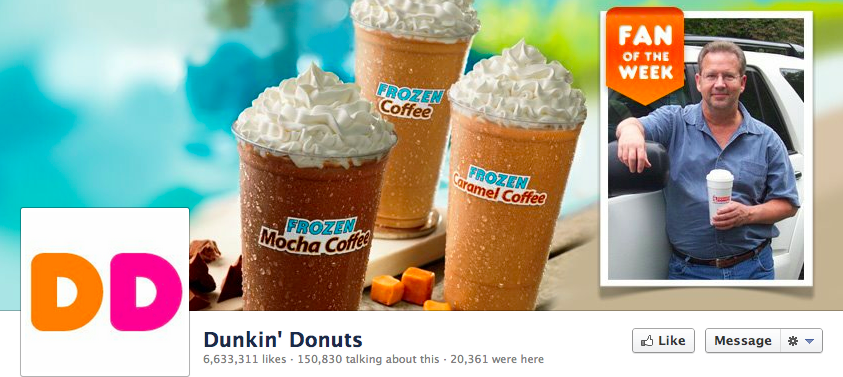Save 50% on a 3-month Digiday+ membership. Ends Dec 12.

Facebook is a platform that provides any number of ways brands can try to break through to consumers. Yet it’s proving fiendishly difficult. According to some estimates, the typical brand post is read by just 16 percent of its audience.
A new report by Wildfire, however, suggests that regardless of the content type, there are certain types of messaging that consistently increase fan engagement. The key, naturally, lies in figuring out exactly what a brand’s fans are passionate about and then finding the content that taps into that enthusiasm. Here are Wildifire’s rules of the road:
1. Play into their passions
Rue La La is a brand that is excelling at engaging its fans on a personal and emotional level, according to Wildfire. The company often relies on Facebook’s live chat feature, asking fashion icons such as Elle fashion editor Sydney Wasserman to to carry on a conversation with Rue La La fans in real time. Forty-three fans engaged during the live chat. This is an example of the way that a brand could tap into the passions of its fans. And although 43 participants aren’t a big portion of Rue La La’s 261,000 fans on Facebook, spurring this type of personal engagement is a win for the brand. It also shows just how hard large-scale engagement can be.
2. Let them express themselves
Another surefire way to spur engagement on Facebook, according to Wildfire, is to give fans a platform to express themselves. HomeAgain Pet Rescuers, a microchip and recovery service for pets, uses its Facebook page as a place for fans to share their photos, videos and experiences having to do with their pets. The brand also reposts links, photos and videos of cute animals from all over the Web. But the posts with the most engagement are the ones that ask followers to share stuff about their own pets.
3. Ask simple, easy to answer questions
Asking questions has been a messaging strategy that has fared well for online retailer Ideeli. The company has found that the simpler the question, the more engagement it sees. So Ideeli features weekly like-or-dislike posts, asking fans for their opinion on fashion.
The Verge, a digital tech publication, also asks simple questions that are easy to answer. For example, “Android or iPhone?” or “What is your current Web browser?” The company has seen a dramatic difference in engagement between posts that ask open questions and those that ask closed questions. Closed questions are the clear winners.
4. Tell them what you want
Be clear with fans about what you want them to do. So the Wildfire team has seen that ending a post on its Facebook page with, “Like this post,” actually generates more likes. “The lesson: Never leave the next step up to interpretation,” Wildfire says in its report. “Tell fans exactly what you want them to do.”
5. Treat them like VIPs
Another messaging strategy that works on Facebook has to do with the treating fans like they are VIPs through exclusive content. Internal photos of the brand’s team, videos from a company event, coupons, giveaways and sweepstakes, are the posts that are seeing the highest engagement, according to Wildfire. According to ad agency Razorfish, the No.1 reason that consumers like a brand on Facebook is because they expect something in return like content, promotions and deals. Giving fans content that makes them feel privileged or special works well. Dunkin’ Donuts does this with Facebook. Fans are asked to submit photos of themselves with Dunkin’ Donuts products, and each week a fan’s photo is featured on the brand’s Facebook page.
6. Get personal
Turn Facebook into a dialogue instead of a monologue, suggests Wildfire. “Address your fans by name whenever possible, and respond to their comments one-on-one,” the report says. For example, the page administrator for Procter & Gamble’s Tide addresses fan and customer questions directly, addressing commenters by name and thanking them for their feedback.
Another very obvious but underutilized tactic for figuring out what fans would engage with the most on Facebook is actually asking them. And finally, responding to and actually acting on their suggestions will take the relationship one step further.
7. Be human
The last tip that Wildfire presents in its report is giving your brand a human touch. “Any messaging that humanizes your brand, adds depth to its personality, or colors its character typically goes over extremely well with fans,” the report says. For example, Holland America fans respond enthusiastically to photos that show life behind the scenes with the cruise ship’s crew.
“[There are various ways to build engagement on Facebook]. First, humanize your brand by being personal, friendly, and unafraid to tap into the shared passions that brought you together in the first place,” Wildfire suggests in the report. “Always make your fans feel special and appreciated by giving them one-on-one or VIP treatment whenever possible — even if it’s just a thank you or a peek behind the scenes. And finally, keep things as simple as possible by making it easy for fans to respond to your posts, and by letting them know exactly what it is you’d like them to do next.”
More in Marketing

‘We just did the math’: The new baseline for ad tech transparency
Ad execs said the industry is shifting toward a renewed transparency push driven as much by day-to-day operational pressure as by principle.

In Graphic Detail: Here’s what the creator economy is expected to look like in 2026
Digiday has charted its expected revenue, key platforms for creator content as well as what types of creators brands want to work with.

Ulta, Best Buy and Adidas dominate AI holiday shopping mentions
The brands that are seeing the biggest boost from this shift in consumer behavior are some of the biggest retailers.





